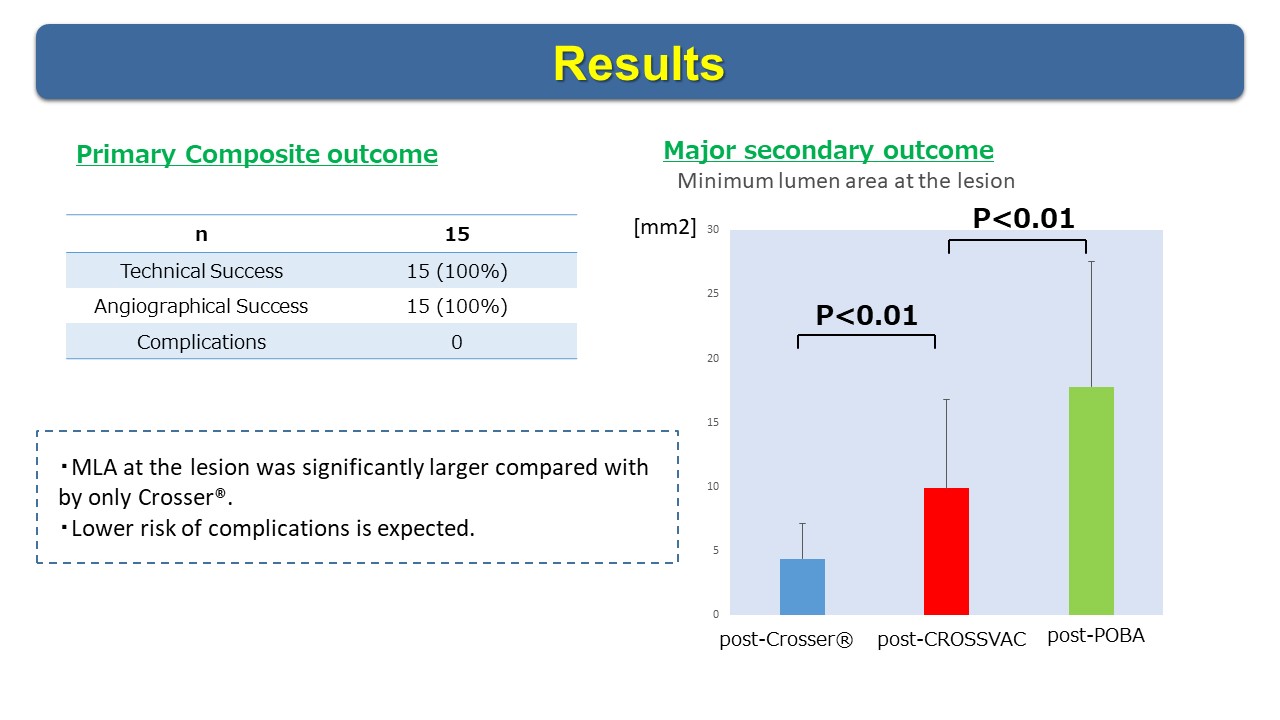Lots of interesting abstracts and cases were submitted for TCTAP 2023. Below are the accepted ones after a thorough review by our official reviewers. Don’t miss the opportunity to expand your knowledge and interact with authors as well as virtual participants by sharing your opinion in the comment section!
TCTAP A-054
“CROSSVAC” - A New Flossing Strategy for Severe Calcified Lesion
By Yukihiro Yamaguchi, Hideyuki Takimura, Reiko Tsukahara, Masatsugu Nakano, Satoru Nishio, Yukako Takimura, Mami Kawano, Emi Tajima, Ippei Tsuzuki, Rintaro Taniguchi
Presenter
Yukihiro Yamaguchi
Authors
Yukihiro Yamaguchi1, Hideyuki Takimura2, Reiko Tsukahara2, Masatsugu Nakano2, Satoru Nishio2, Yukako Takimura2, Mami Kawano2, Emi Tajima2, Ippei Tsuzuki2, Rintaro Taniguchi2
Affiliation
International University of Health and Welfare, Japan1, Tokyo General Hospital, Japan2
View Study Report
TCTAP A-054
Peripheral Vascular Disease and Intervention
“CROSSVAC” - A New Flossing Strategy for Severe Calcified Lesion
Yukihiro Yamaguchi1, Hideyuki Takimura2, Reiko Tsukahara2, Masatsugu Nakano2, Satoru Nishio2, Yukako Takimura2, Mami Kawano2, Emi Tajima2, Ippei Tsuzuki2, Rintaro Taniguchi2
International University of Health and Welfare, Japan1, Tokyo General Hospital, Japan2
Background
Severely calcified lesion is one of the most difficult cases for EVT (Endovascular Treatment). Calcified nodule known as protruding calcification is also particularly challenging in the field of EVT due to poor dilatation and healthy mesial damage resulting in a high restenosis rate. In addition, it is necessary to get adequate pre-dilation before using Drug Eluting Balloon (DCB) in joint sites such as the femoral or popliteal artery where Drug Eluting Stent (DES) is not an option. We have found that eccentric calcification is a major obstacle in patients who require a femoral artery access site for the treatment of structural heart disease (SHD) such as TAVI (Transcatheter Aortic Valve Implantation).




Methods
We performed the CROSSVAC method for 24 patients with severe eccentric calcified lesions from September 2019 to January 2022. The Study design was a retrospective, non-randomized study. The primary composite outcome was technical, angiographic success rate and complications, major secondary outcomes was the minimum lumen area of the lesion as measured by IVUS (Intravascular Ultrasound) or OFDI (Optical Frequency Domain Imaging).
Results
Results showed that technical and angiographic success rates were both 100%. In 15 cases, IVUS or OFDI were used and the MLA at the lesion was significantly larger in the CROSSVAC method compared to Crosser® alone (4.4±2.8mm vs 9.9±6.9mm; p=0.001). After balloon dilation, the MLA was even significantly enlarged (9.9±6.9mm vs 17.8±9.7mm; p<0.001).


Conclusion
In conclusion, “CROSSVAC” is a new and aggressive flossing method which is extremely useful to reduce eccentric calcification and get enough modification and lower risk of complication is expected.


